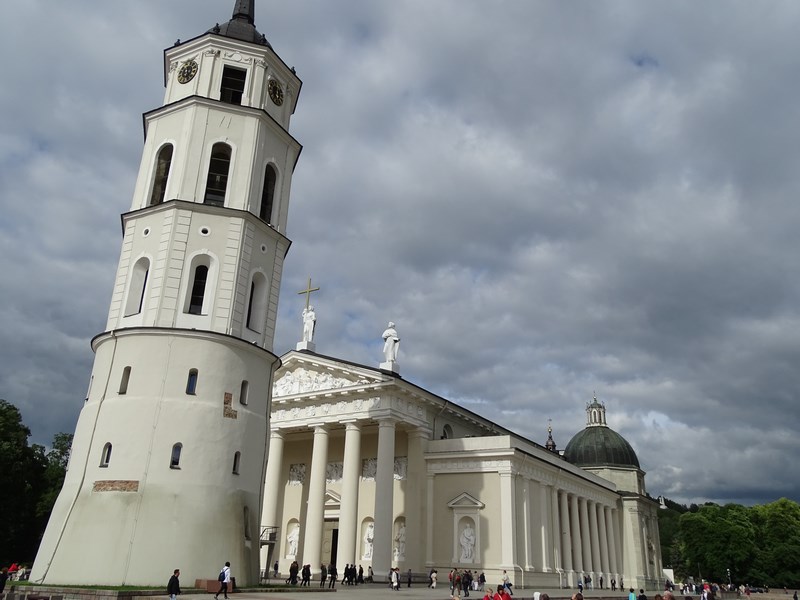Singapore – the Lion City from the land’s end. Episode 1
For some, Singapore is the paradise of order, discipline and cleanliness– where else could you find an entire Indian neighborhood that is spotless? For others, Singapore is a sterile, conformist city, lacking color and taste, a city for androids (I don’t mean the operating system). But both parties are right. The city-state from Malay Peninsula is the embodiment of tranquility, order and discipline in a part of the world that is extremely colorful and vibrant. But even here, the atmosphere becomes a liberal and relaxed one and when” the iron government” of Singapore loosened up certain practices (for example, dancing on top of a bar was removed from the list of offences and the closing time of bars was extended ‘til midnight during the week and until 2AM on Fridays and Saturdays) fun entered the city in full speed.
The story of Singapore is of recent date. In 1819, a certain Sir Stamford Raffles disembarked in a place where now you can find his own white marble statue. By that time, in Singapore existed only a fishermen village inhabited by approximately 150 souls and owned by the powerful sultan of Johor. When Raffles arrived there, the sultan died and Raffles meddled in his throne succession by supporting the winner, thus in 1824, he obtained this piece of land for Great Britain. It was an excellent deal– Singapore was situated at the end of Malay Peninsula, an area meant for prosperity due to commerce– it was the compulsory way of commercial boats that sailed between Europe and China, one of the main goods exchange route of mankind.
The English entrepreneurs put their minds to work immediately after disembarking in Singapore. In a period of only two years, almost 10,000 colonists of Chinese, Malayan and Indonesian origin settled there and Sir Raffles began the construction of wide streets, ports, churches and a botanical garden and thus laying the grounds for what Raffles hoped one day to achieve: “a place of a considerable magnitude and importance”. For more than a century, Singapore developed under British ruling and it was here that many Europeans, Chinese, Indians and Malayans settled down. Today, these four ethnic groups represent the most important constituent nations of Singapore. The Chinese are the dominant nation with approximately 70% of the entire population.
The tranquility and prosperity of the area was shuttered though in December 1941 when only a few hours before the Pearl Harbor attack, the Japanese troops disembarked in Malaysia at Kota Bharu. In no less than 2 months, the two-wheeled troops of the Japanese (yes, the Japanese army took over the island on bicycles!) arrived in front of JohorStrait. The huge defense cannons of the island-city were directed towards a potential enemy coming from the sea. Nobody expected an attack on land, so it was no surprise that Singapore was conquered in a single night. The Japanese changed the name of the city from Singapore (“Singha” means lion in most South-Eastern languages) to Syonan (“Light of the South”) and the Japanese governor, General Yamashita sentenced the Europeans to a life of hell in Changi Prison and also executed thousands of Chinese during the first days of the invasion. The Japanese troops from Singapore won’t surrender until September 1945, after the atomic bombs from Hiroshima and Nagasaki.
The ‘50s were dominated by the independence struggle of Malaysia and Singapore. Malaysia obtained its independence (Merdeka) in 1957. In peninsular Malaysia, Malayan parties took over the power because the Chinese pro-Communist guerilla troops representing the population majority were destroyed by the British since the end of the war. In order to have the Malayans gain a majority, be it a fragile one, the former sultanates of Borneo (Sabah and Sarawak) united with the peninsula by forming The Malayan Federation. Ethnic Malayans started to be favored by the government in order to take over the economic power from the Chinese. But being inhabited mostly by Chinese, Singapore reacted by voting the People’s Action Party, a Socialist party led by the young Cambridge graduate, Lee Kuan Yew. Malaysia gained its independence whereas Singapore continued to be a British colony. Malaysia didn’t want a Communist republic breathing down its neck, “a Cuba beyond the Causeway”, considering that those guerilla troops were still active in the peninsula. In 1961, Tunku Abdul Rahman, the Malayan Prime Minister proposed Singapore to join them and it all became a reality in 1963. But this union never worked out. Singapore refused to put into practice the constitutional privileges given to Malayans by the new Federation which transformed the Chinese into second degree citizens. Thus, two years later, despite the deep regret of Prime Minister Lee Kuan Yew, Singapore was expelled from the Federation.
For three decades, Lee Kuan Yew ruled Singapore in such a strong manner, but leading it to prosperity. Even though in 1965, Lee thought that Singapore didn’t stand a chance, rolled up his sleeves and got down to business. Moreover, Lee Kuan Yew’s motto: “there’s no other alternative than working even harder and more than anyone else”, became a guiding line that was taken over willy-nilly by the entire nation. And it was a very hard work – harbor facilities and financial services, an infrastructure updated daily and an extremely qualified labor force which made of Singapore one of the most developed countries in the world.
But Lee imagined that these achievements would have been possible only by embracing a true dictatorship in the field of education – any nonattendance in school led to harsh punishments both for children and their parents. Besides, Singapore was built as a dictatorship, but an enlightened one, like some political figure in my country enjoyed saying. The opposite parties were considered unlawful, truancy was severely repressed, while order and discipline were strongly enforced (for example, smoking in public places is forbidden as the streets are considered public places. Whoever wants to smoke, can do it only in their own homes or in their own cars provided that the windows are closed and that there’s an air conditioning device to recirculate the smoke). Bars and dance clubs were until recently close by 10 PM sharp, chewing gum was forbidden by law, the policy of having only one child was enforced, the fine for spitting in public is 100 €, throwing garbage in the street about 500 €, jaywalking or crossing the street more than 50 meters away from the pedestrian crossing takes out of your pockets other 25 €). Singapore was and still is ironically named “the nanny state” because it controls and educates its citizens as a severe, but loving nanny.
Long term planning and political stability was and continues to be thought of as essential and the Prime Minister’s successor has been preparing for years for such position. When Lee Kuan Yew left the office in 1990, his successor, Goh Chok Tong, had been announced since 1985 as the one to take over the power. Lee Kuan Yew was named “senior minister”, and, in 2000s, “mentor minister”, a position he left in 2011 when he was 88 years old. The current Prime Minister of Singapore, Lee Hsien Loong is the son of Lee Kuan Yew and took over the power in 2004. His position was prepared since 1990 when his father decided to step back. As you already might be guessing, Goh Chok Tong was also appointed “senior minister” for life.
The regime of Goh Chok Tong was proved to be a more liberal one. Today, sugar free chewing gum can be bought from pharmacies, the number of bars and dance clubs increased and the foreigners that like wearing their hair long are now allowed to walk freely within the so conformist republic without receiving in their passport the stamp “SHIT” (“Suspected Hippy in Transit”) and which meant permanent interdiction of entering Singapore. The political opponents aren’t thrown directly into prison anymore, but sued for slandering. But despite of all the now relaxed measures, every 5 meters you can see small signs reminding you the fines for public spitting, garbage throwing in the street, jaywalking in forbidden areas and carrying durians (a local fruit which is extremely sweet but very stinky) in the public transportation means.
The government of Singapore continues to function just as the management of a professional multinational company. Its ministers are the best paid in the world as their salaries equal with 75% off the general managers’ from the most important national or foreign companies in the republic. A minister has an annual salary of millions of Euro, but at the same time must generate billions of Euros! If such a job might interest you, the salary of the prime minister is of 1.9 million Euros per year unlike Obama earning merely 300,000 Euro!
All these interdictions may seem frightening but if you behave respectfully as your parents may have taught you in your first years of life, than you won’t be having any sort of problem in Singapore. Oh, and something else: carrying even 1 gram of cocaine, heroin or any other drug leads you to an immediate death sentence. Recently, even Thailand adhered to such views and now the death penalty is in effect no matter your nationality.
Pictures of Singapore:
Raffles Hotel – a classical one!
CBD – Central Business District
The statue of Raffles
Office building… with a bit of nature
Statues that render the history of Singapore
“Durian”
Merlion, the symbol of the city
Happy birthday, Singapore
In a city almost void of cigarettes 🙂
Orchard Road
Changi Airport













Singapore is such a city of contrasts: antique and modern, black/white and colorful. You are right. That dome looks like a durian (I have never seen it like that before).
‘ Oh, and something else: carrying even 1 gram of cocaine, heroin or any other drug leads you to an immediate death sentence” BULLSHIT !!! what is your source of that crap?